How Long Is The Grand Canyon?
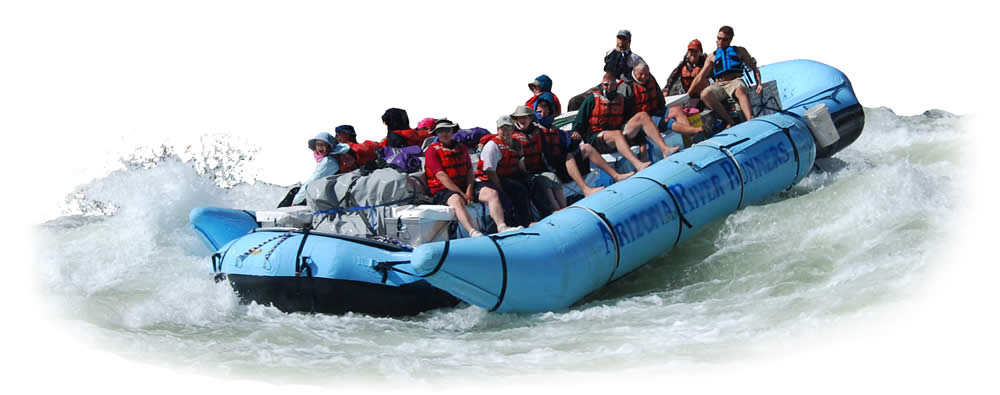
Join a Canyon Ministries guide and i of AiG's speakers on a once-in-a-lifetime rafting trip and come across Yard Canyon from a creationist perspective.
The Grand Coulee is ane of the world's about crawly erosional features. Information technology is 277 miles (446 km) long, including the sixty miles (96 km) of Marble Coulee upstream. The depth of the main segment of the Grand Coulee varies between 3,000 and vi,000 anxiety (900 and i,800 g), with the rim-to-rim width between 4 and 18 miles (6 and 29 km). Its origin has plagued geologists since the time of John Wesley Powell's first mettlesome voyage down the Colorado River in 1869. Despite an increase in knowledge about its geology, evolutionary geologists have yet been unable to explicate the canyon.1
Into What Was the Grand Canyon Carved?
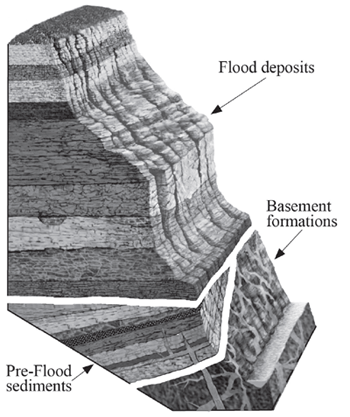
Figure 1. Grand Canyon strata diagram
Earlier discussing when and how the Grand Canyon was formed, information technology is kickoff important to understand where and through what geologic feature it was carved. Located in northern Arizona, the One thousand Canyon has been eroded through the southern end of the Colorado Plateau. Carved through sedimentary layers of sandstone, limestone, and shale and into the basement formations of mostly metamorphic schists and igneous granites, the 1000 Canyon is a testimony to the erosive ability of water.
Merely how did these rock layers kickoff grade? They tin be divided into iii groups as shown in figure i. The crystalline basement formations are believed by virtually cosmos geologists to have been set in identify on Solar day 3 of the Creation Calendar week. The tilted pre-Flood sediment layers are upwardly to fourteen,000 feet (4,260 m) in thickness, but are only exposed in the eastern canyon and in a few other areas. The upper layers—the horizontal Flood deposits—cover the entire plateau and, in some cases, the vast bulk of the North American continent.2
3 Undisputed Observations
The Enormous Scale of Erosion
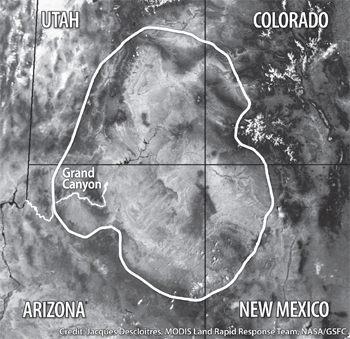
Figure 2. The extent of the Colorado Plateau
A elementary adding of the book of the Grand Canyon reveals about 1,000 cubic miles (4,000 cubic km) of cloth accept been removed from northern Arizona to produce merely the topographic shape of the canyon itself. However, that is not all the erosion which occurred. The One thousand Canyon has been carved into a broad elevated area known as the Colorado Plateau (figure two). The Colorado Plateau covers an expanse of near 250,000 foursquare miles (647,000 square km) and consists of several smaller plateaus, which today stand at slightly varying elevations. The Kaibab Plateau, which reached more than 9,000 feet (two,740 m), forms part of the North Rim of the K Canyon. The sequence of sedimentary rock layers that forms these plateaus consists of many more layers than those exposed in the walls of the Yard Canyon today. In addition, to the north of the canyon there is a sequence of ascending cliffs called the Grand Staircase in which a further 10,000 anxiety (3,000 thou) of sedimentary layers are exposed (figure 3). Still, in the Grand Canyon region, most of these layers take been eroded away leaving just a few remnants, such as Cerise Butte (effigy 4), about sixteen miles (25 km) s of the South Rim of the canyon.3 The layers eroded from the Grand Staircase south to the 1000 Coulee expanse represent an enormous volume of material, removed by sheet-like erosion over a vast area. Information technology has been estimated that this volume of sediments eroded from the plateau was around 100,000 cubic miles (400,000 cubic km)!four

Figure 3. Cross-department through the Grand Canyon-K Staircase region showing the extent of the rock layers. Click for larger image.

Effigy iv. Cherry-red Butte
The G Canyon Was Cut Through the Plateau
Mayhap the almost baffling observation, even to evolutionary geologists, is that the Grand Canyon cuts through, non around, a neat plateau. Ranney, in his 2005 book Carving One thousand Canyon: Bear witness, Theories, and Mystery, said:
Oddly plenty, the Grand Coulee is located in a place where it seemingly shouldn't be. Some xx miles e of Grand Coulee Hamlet, the Colorado River turned sharply ninety degrees, from a southern course to a western one and into the middle of the uplifted Kaibab Plateau. . . . It appears to cut correct through this uplifted wall of stone, which lies three thousand feet above the adjacent Marble Platform to the e.5

Figure 5. NASA satellite image of the Thou Coulee area, with outline of the different plateaus through which the canyon cuts.
Indeed, the headwaters of the Colorado River are at a lower elevation than the top of the Kaibab Plateau through which the Thousand Canyon has been cut (figure v).
Uplift of This Plateau Occurred Before Erosion of the Grand Canyon
This third observation also has profound implications apropos the origin of the K Coulee. At the eastern edge of the Kaibab Plateau, the sedimentary rock layers were bent, or every bit a geologist would say "folded," along the Eastward Kaibab Monocline at the fourth dimension the plateau was uplifted. The uppermost folded layers have been beveled by erosion and overlaid by the apartment-lying Wasatch Formation, which is younger.six Furthermore, gravel deposits (from the Paleocene and Eocene epochs and thus younger than the folded Cretaceous layers) occur inside channels eroded into the surface of the Kaibab Plateau, indicating the major uplift of the plateau and the accompanying erosion of its surface coincided with the uplift of the whole Colorado Plateau.7 Therefore, in evolutionary thinking the plateau is geologically "old," and well-nigh evolutionary geologists believe its uplift occurred before erosion of the canyon into and through the plateau. Just that leaves the headwaters of the Colorado River at a lower elevation than the superlative of that plateau, which indicates the Colorado River could not take carved the 1000 Canyon!
The Secular Controversy Over When the Grand Coulee Was Eroded
Over the last 30 years, the time frame for the etching of the Grand Canyon has gone total circle.
Over the last 30 years, the time frame for the carving of the K Canyon has gone full circumvolve. Thirty years ago, well-nigh evolutionists believed the canyon was about seventy million years former. But that estimate inverse as radioisotope dating was utilized to show the plateau to be much older than the coulee itself. Basalts found on the North Rim near the western finish of the canyon were estimated to be only 6 million years onetime, just these same basalts are also found on the South Rim!viii This means these lavas had to flow across from one rim to the other, a process which could non have occurred had the canyon been in place at the fourth dimension. The age of at least the western 1000 Canyon was thus reduced to half-dozen 1000000 years, just many continued to believe the primal and eastern canyon was 70 meg years old, based on the stream-capturing theory outlined below. Subsequently, the seventy-1000000-year date was gradually reduced to 17 million years, based on several pieces of the puzzle indicating a younger canyon.9
New findings keep to question the age of the coulee. Some scientists still suggest 70 meg years equally the correct age, while others place it at less than 6 million years.10 The debate goes on, with none of the accepted dating methods providing a clear-cut answer to the historic period of the Grand Canyon.11
The Secular Claims Almost How the Canyon Was Eroded
John Wesley Powell was the first to endeavor an explanation of how the Yard Coulee was formed. Known as the "antecedent river" theory, Powell theorized an ancient river eroded down into the Colorado Plateau at the same rate the plateau was existence uplifted.12 Although this slow, gradual process fit nicely into the ruling uniformitarian thinking, over the next 50 to 75 years it was rejected past most geologists. The fatal accident confronting it came with radioisotope dating of the rim rocks.
The ancestor river theory was replaced by the idea of "stream capturing." Stream capturing suggests that through a process called headward erosion, the G Canyon was cut from the west through the plateau to "capture" the river, which ran a different direction at the time.thirteen This is the theory many evolutionary geologists hold today, but it has seen significant changes over the final 30 years.
The initial stream capturing model had the bequeathed Colorado River running through Marble Canyon to the Little Colorado River drainage, where the river so took a southeasterly management, draining due east into the Rio Grande River (figure 6). Another drainage existed to the west of the plateau cut back through the plateau. Withal, its headward erosion and then cut eastward through about 200 miles (320 km) of the Colorado Plateau and captured the ancestral Colorado River, which and so inverse its period to a westerly management. Subsequent to this capture, the area to the southeast was uplifted then the Little Colorado River now flows into the Colorado River. This idea met its demise in part because the necessary erosional debris could not be plant anywhere east of the canyon.
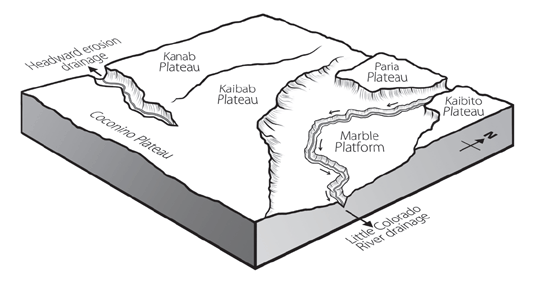
Figure 6. Bequeathed Colorado River drainage flowing southeastward toward the Rio Grande
All the same having the problem of the basalts on both rims of the western plateau, the theory was modified. The at present widely accepted theory has the stream capturing taking place at ane of the northwest-tending drainages believed to take existed prior to the plateau uplift.14 The bequeathed Colorado River was thought to have taken a plow to the due north, draining into the Great Salt Lake region (figure 7). Once more, once the capture took identify, the plateau was uplifted, causing the northwest-tending drainages to flow into the Colorado River. This modified model seems to be the predominant theory among evolutionary geologists today.
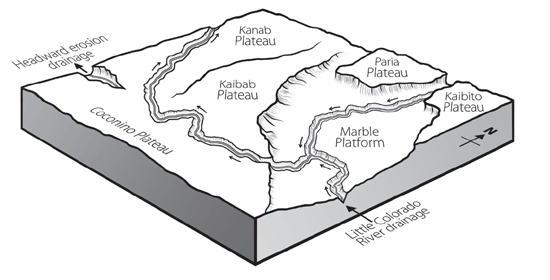
Figure vii. Bequeathed Colorado River drainage flowing northwestward toward the Great Salt Lake
Evidences that Canyon Erosion Was Recent and Rapid
There are several pieces of evidence which propose the Grand Canyon is a recent or "young" canyon. When considered individually, they are significant challenges to the uniformitarian (long-age) model; when taken equally a whole, they become catastrophic. Following is a brief outline of some of those challenges.
Droppings Non in the Present River Delta
Well-nigh 1,000 cubic miles (4,000 cubic km) of material has been eroded to form the One thousand Canyon. Where did it go? If the canyon was eroded by the Colorado River, an enormous delta should be found at the mouth of the river where information technology empties into the Gulf of California. But the delta contains only a small fraction of this eroded material.15 This same problem is found with nearly river deltas; they merely incorporate enough textile to represent thousands, non millions, of years of erosion.
Stable Cliffs
One of the well-nigh striking features of the G Canyon is the massive sheer cliffs of sedimentary rocks. It is the difference in the rocks' makeup that gives the canyon its colour and progressive stair-stepped profile of cliffs to a higher place broad slopes. The cliffs are made more often than not of limestone and sandstone, with some formations reaching 500 feet (150 m) in thickness. The dark, near blackness, color of large sections of the sheer cliffs is due to a blanket of desert varnish, which develops slowly over many years16 and is indicative of their stability. Where recent rockfalls occur, the desert varnish is missing. The fact that the cliffs maintain their desert varnish color indicates they are rarely experiencing fifty-fifty minor rockfalls; thus they are very stable. This is only consistent with their germination by contempo catastrophic erosion, non millions of years of boring erosion.
No Talus
The lack of debris, or talus, at the base of the cliffs is also a claiming to the evolutionary model. Over millions of years of erosion, one would expect to find large amounts of talus at the base of the cliffs inside the Thousand Canyon.17 The almost obvious areas of this lack of talus is within the side canyons ending in broad U-shaped amphitheaters. Some of these amphitheaters are hundreds of feet deep and extend back as much as a mile (i.6 km) from the river. The majority have no water source to remove material, however the bases of most of these cliffs are relatively "clean," with very little talus. Within the evolutionary model, in that location is no mechanism for the removal of this material.
Relict Landforms
The stability of the Grand Canyon cliffs and the lack of talus at their bases are indicative of the canyon being a relict landform. In other words, the K Canyon has inverse very lilliputian since it was carved. It is a relatively unchanged remnant or relict of the outcome that eroded information technology, which therefore could non have been today'south slow river processes extrapolated dorsum into the by.
There are several remnants, or relict landforms, of the textile that now makes upward the Grand Staircase to the north of the Grand Coulee. The two well-nigh noticeable ones are Ruddy Butte, 16 miles (25 km) south of the S Rim (see effigy 4), and Cedar Mountain just east of Desert View Overlook on the South Rim. These remnants, and others similar them, are by and large capped with volcanic basalt, which has protected the sedimentary layers from existence eroded away. These same sedimentary layers likewise grade the base of the San Francisco Peaks just n of Flagstaff, Arizona.
These relicts testify to a massive erosional event, which in the biblical model is explained by the receding waters of the catastrophic global Genesis Overflowing.
Examples of Catastrophic Erosion
Catastrophic geologic events are not generally part of the uniformitarian geologist's thinking, only rather include events that are local or regional in size. Ane example of a regional event would exist the 15,000 square miles (39,000 square km) of the Channeled Scablands in eastern Washington. Initially thought to be the product of tiresome gradual processes, this first came into question in 1923 when J. Harlen Bretz presented a paper to the Geological Society of America suggesting the Scablands were eroded catastrophically.18 For the adjacent 30 years Bretz was ridiculed for his theory, simply in 1956 boosted information was presented supporting the idea. Over the next xx years, the evidence was pieced together to bear witness the Scablands were, in fact, catastrophically eroded by the "Spokane Flood."19 This Spokane flood was the result of the breaching of an water ice dam that had created glacial Lake Missoula. Today, the United States Geological Survey estimates the flood released 500 cubic miles (2,000 cubic km) of water, which drained in as fiddling as 48 hours, gouging out millions of tons of solid stone.
A more recent case of the power of catastrophic processes was observed at Mount St. Helens in 1980. Two hundred million cubic yards (153 million cubic meters) of material was catastrophically deposited past volcanic flows at the base of the mountain in just a thing of hours. Less than two years later, a pocket-sized eruption caused a mudflow, which carved channels through the recently deposited material.20 These channels, which are i/40th the size of the Grand Canyon, exposed flat contacts between the catastrophically deposited layers, contacts similar to those seen between the layers exposed in the walls of the Grand Canyon.
Both these events were relatively minor compared to a global flood. For example, the eruption of Mount St. Helens contained simply 0.27 cubic miles (i.ane cubic km) of material compared to other eruptions, which have been as much every bit 950 cubic miles (3,960 cubic km). That is over 2,000 times the size of Mountain St. Helens!
If Noah's Alluvion laid down the layers rapidly . . . the boundaries between the layers would be flat and smoothen.
If Noah'south Flood laid downwardly the layers chop-chop, 1 on elevation of some other every bit was observed at Mountain St. Helens, the boundaries between the layers would be apartment and smooth, but as they are so magnificently displayed in the Grand Coulee. And the Channeled Scablands present a clear instance of how the layers of the One thousand Canyon could have easily been eroded catastrophically, maybe in a affair of just a few days.
An instance of how quickly water can erode through the formations of the Yard Canyon region took identify on June 28, 1983, when the pending overflow of Lake Powell required the use of the Glen Coulee Dam'due south 40-pes (12-chiliad) bore spillway tunnels for the showtime time. As the volume of water increased, the entire dam started to vibrate and large boulders spewed from one of the spillways. The spillway was immediately shut downward and an inspection revealed catastrophic erosion had cut through the three-foot-thick reinforced concrete walls and eroded a hole 40 feet (12 m) wide, 32 anxiety (10 m) deep, and 150 feet (46 m) long in the sandstone beneath the dam.21
Catastrophic erosion such as this frequently starts when vacuum bubbles form and implode with jackhammer-like ability, eating away anything in their way. This is called cavitation.22 Every bit volumes increase, whirlpool-like vortexes form, sucking material from the lesser in a process chosen kolking. That material then enters the period and acts as projectiles, removing even more material. The erosive power of these forces continues almost exponentially as the volume of water increases. These aforementioned forces would have had a major role in the germination of the Grand Canyon.
Erosion of M Canyon Within the Biblical Account of Earth History
Not long after all the fossil-bearing sedimentary layers of the Colorado Plateau had been deposited past the rising Flood waters, those same waters began to recede. We are told in Psalm 104:8 that at the end of the Alluvion, the mountains rose and the valleys sank downwardly, causing the waters to bleed off the continents back into new ocean basins. Massive sheet erosion occurred across the plateau while information technology was beingness uplifted, carving the Grand Staircase and leaving behind the colored cliffs, canyons similar Zion Canyon, and isolated remnants like Red Butte. Equally the Inundation receded, h2o would have become trapped behind natural dams north and east of what is now the Grand Canyon area. Some estimate these lakes could have contained every bit much as iii,000 cubic miles (12,500 cubic km) of water (about iii times the volume of today'due south Lake Michigan).23 Figure 8 shows where i of these lakes may have been, with additional lake(south) potentially north of the Paria-Kaibito Plateau.
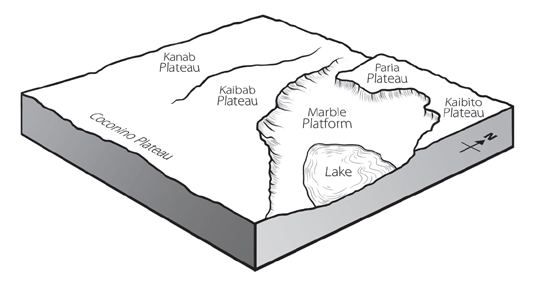
Figure 8. Natural dams trap receding Inundation waters creating large lake(s).
The warming of the oceans caused by the opening of the fountains of the great deep during the Flood would also have resulted in increased rainfall in this region immediately after the Flood. Storms potentially dumped as much as 100 inches (ii.5 k) of rain at a time in the expanse just north of the canyon.24 This rainfall would have increased the water level in the impounded lakes and would have been a powerful erosional force of its own.
As the Flood waters connected to recede, the canvass erosion beyond the rising Colorado Plateau would have macerated and the water would have started to channelize. This channelization would have then cutting the initial path of the coulee.
The Kaibab Plateau at present stands some three,000 feet (900 thousand) above the adjacent Marble Platform, both part of the Colorado Plateau (figure 5). Merely the lack of erosional cliffs on the north and eastern sides of the Kaibab Plateau suggests that the southern end of the plateau continued to exist uplifted after the rest of the region had stabilized. If this uplifting occurred just prior to, or even during, the channelization stage of the receding Flood waters, information technology would account for the lack of cliffs. It would besides account for the direction of the side canyons eroded into the Kaibab Plateau. For case, some of the side canyons carved into the Marble Platform that join to form Marble Coulee, drain to the northeast, which seems to be the wrong direction. But that would accept been the direction in which the receding waters flowed equally the Kaibab Plateau was uplifted. Since the Kaibab Plateau is higher at its southern rim, this would likewise account for the longer and deeper side canyons carved into the Due north Rim of the Grand Canyon, which likewise follows along that southern edge of the plateau. Thus the Southward Rim of the canyon follows the northern edge of the Coconino Plateau (effigy v).
Within the uplifted Colorado Plateau are several limestone layers susceptible to beingness dissolved by surface and ground waters, as evidenced today past all the caves in the Redwall Limestone, from many of which streams menstruum. Because of all the volcanic action during the Flood, the waters could have been slightly acidic, increasing their power to dissolve limestone. So no sooner had these leftover Flood waters been dammed than they would have begun to notice and exploit weaknesses in the limestone and other layers making up the plateau.
Whether it happened as the Flood year concluded, or soon thereafter, the lakes would take soon breached their dams, washing over the plateau and exploiting any channels already in that location, rapidly carving through the plateau resulting in a deep canyon very similar to what we meet today (figure 9).
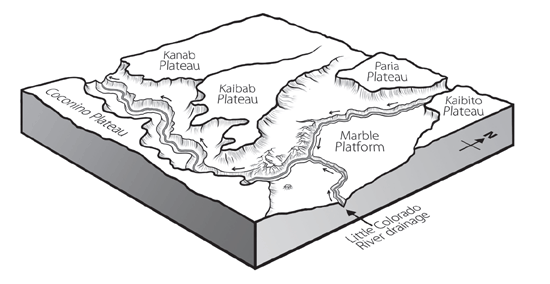
Figure nine. Current drainage of the Colorado and Little Colorado Rivers
A Few Perplexing Questions
As creationists, we exercise not have all the answers. In fact, there are many unanswered questions when it comes to the formation of the 1000 Canyon. For example, exactly when the Kaibab Plateau was uplifted during the formation of the Grand Coulee is uncertain. Another question relates to the erosional evidence associated with the breaching of the natural dams. It is unclear every bit to why the waters would have eroded the grade they appear to accept taken, and why the remaining landscape has some of the features shown today. Also, unknown is what consequence the increased rainfall in the region had on carving the canyon.
Some creationists aspect the formation of the canyon almost solely to the breaching of the dams, while others see the receding of the Flood waters to be the chief carving mechanism. It is suggested here that combining the strengths of both models best explains the evidence and what we see in the Grand Canyon today.
These problems, still, exercise non weaken the bear witness for the catastrophic etching of the Grand Coulee and its human relationship to the Flood. It only shows there is still inquiry to exist done in society to better sympathize the canyon's germination.
Conclusion
Although we cannot exist sure of the sequence and timing of these events, the evidence shows the Chiliad Canyon was formed rapidly, as were the layers into which information technology is carved. Thus, rather than slow and gradual erosion by the Colorado River over eons of time, the Yard Canyon was carved rapidly by a lot of water in a fiddling bit of time! The reason the Colorado River exists today is because the Thousand Coulee was eroded first, shortly later the end of the Genesis Flood.
Source: https://answersingenesis.org/geology/grand-canyon-facts/when-and-how-did-the-grand-canyon-form/
Posted by: chambersfelf1972.blogspot.com


0 Response to "How Long Is The Grand Canyon?"
Post a Comment